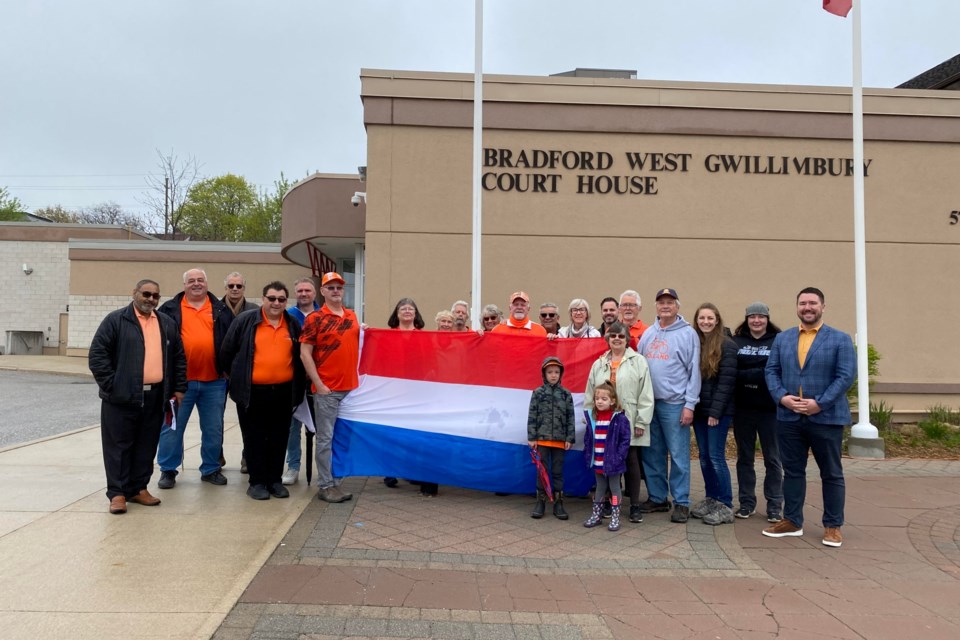On Sunday a small group met in Bradford to celebrate a Dutch flag raising to commemorate the Dutch Liberation Day on May 5, 1945.
Per Dutch custom, Bevrijdingsdag is a joyful gathering in orange colours.
The Dutch always start the festivities on May 4 with a two-minute total silence throughout the land at exactly 8 p.m.
At that time, their thoughts turn to the many (about 7,600) Canadians who died restoring freedom from the five-year-long Nazi yoke.
In Bradford, the gathering hit the same solemn note.
After a short introduction, our trumpeter, Kat Harper, blew The Last Post, which was followed by our minute of silence during which we remembered those young Canadians who fought and died, as well as the horrible price (both physically and emotionally) people pay in wars.
After that reflective minute, the celebration started with Mayor James Leduc reading Bradford's proclamation emphasizing the bonds that exist between our two countries as well as the positive influences the post-war Dutch immigrants have had enriching the Canadian mosaic. The flag was raised followed by O Canada, musically led by Harper.
I then recalled a war story to show how war, and deeply felt emotional trauma, changes people.
This year's story was about Adriaantje van Heemstra.
Born in Brussels to members of Dutch nobility who favoured Hitler, she ended up in Holland in 1939 because her parents hoped that Holland would, like in the First World War, be neutral.
That was a miscalculation.
During the war years, young Adriaantje (born 1929), pushed by her mother, performed in concerts.
A doctor in a hospital close to Arnhem where she volunteered got her involved in helping the resistance as a courier. The family's outlook had changed when one of her uncles, held hostage by the occupiers, was killed by the Germans in retaliation for acts by the resistance.
Also, one of her two stepbrothers ended up as forced labour in Germany while the other had to go into hiding.
A decision to move to Amsterdam, to help Adriaantje's dancing career, in late 1944 turned out badly because the hunger winter had started.
The hunger winter left Adriaantje, at the time of the Bevrijding, anemic, starved, with edema and a respiratory infection that was ultimately cured with penicillin paid for with money made from selling cigarettes on the black market.
Adriaantje went on to a stellar movie career but her war years trauma left her battling her weight for the rest of her life and unfit to pursue her ballet career.
The world does not know her as Adriaantje, but as Audrey Hepburn.
The gathering finished with the singing of the Dutch National Anthem, Wilhelmus, before having a coffee at the Dutch Store operated by Mardy Broks, who recently donated the new Dutch flag.



